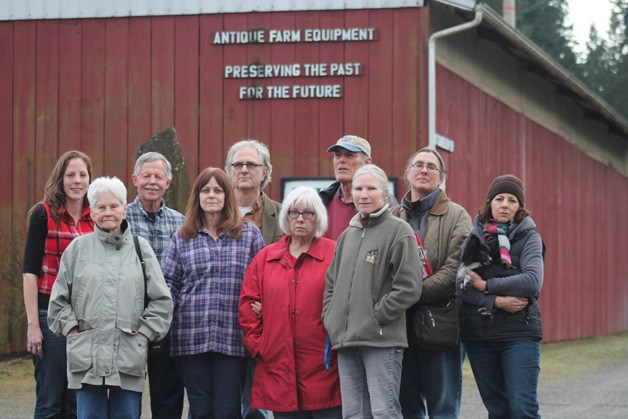A group opposed to the grand proposal for an overhaul of the Island County Fairgrounds wants the backers to slow their roll, scale back and seek more design input.
Wendy Sundquist, one of the Friends of the Fair members, said she and other volunteers with the Whidbey Island Area Fair and its predecessor, the Island County Fair, feel steamrolled by the proposed changes.
“All of us have great love for the Island County Fair and were quite shocked with the presentation given in February,” Sundquist said, referring to the Feb. 18 public unveiling.
“For whatever reason, no information was sent out about this to the superintendents [of fair buildings during the annual event].”
A steering committee of government leaders, nonprofit directors, fair association board members and business owners did not include anyone from the user groups such as 4-H, the equestrian clubs or agriculture in the planning process. Despite little communication from the Friends of the Fair and the committee, upcoming presentations and hearings will likely be delayed.
Fred McCarthy, mayor of Langley and one of the steering committee members, said Tuesday that a meeting of the committee earlier in the morning yielded a decision to push back the county’s hearing at least a month. In the meantime, McCarthy said the committee would plan a meeting to gather public input, rather than a presentation to pitch the changes to the public.
“We need to be open to hearing people’s concern at every phase,” McCarthy said. “Our listening would be with the purpose of hearing ideas that could affect the plan.
“We’re listening. We think they have some legitimate points to make and want to make sure they feel heard,” he said.
The proposal would demolish several buildings, including the Ray Gabelein Sr. Building that houses old farming equipment and other relics of Island County’s rural past, and most of the animal pens and barns.
“Names are on these buildings because people put their time, sweat and tears into them,” said Gwendy Hastings, a former fair association member and a Friend of the Fair.
Added Sundquist: “Once you destroy all of those buildings, you can’t bring them back.”
Members of the Friends group, an informal assembly of people, say they have “more questions than answers” about the $10.12 million overhaul that would transform the fairgrounds from a small-town gathering into a regional destination for events, conferences, expositions and also house the four-day fair. They said they were worried that it would fundamentally change the nature of the property and the fair itself, that it would not recoup its expenses, and that the public was being pushed out of the process.
“It’s so out of the realm of this little area,” Hastings said. “It’s just not practical.”
Many members, who spoke in front of the marked-for-demolition barn that houses old tractors and tills, were flabbergasted that the proposal was presented publicly Feb. 18 and would go before the Island County Commissioners in March for approval.
“We feel very bulldozed,” Hastings said.
McCarthy rejected the notion that the public was intentionally excluded from the planning process.
“I don’t think the public was pushed aside,” he said. “I think the people involved with wanting to rethink the use of the fairgrounds for event coordination gathered together leaders of the community who represented lots of people’s point of view.”
The cost of renting the buildings was also an issue for the new group. Hastings said that simple math from the proposal, based on the amount of revenue the plan expects from certain areas and the number of days expected to be rented, showed the daily rental fee for the covered equine/multi-purpose area would be $1,265, far higher than the few hundred the riders pay for their events currently.
“You’re going to lose locals,” said Virginia Keck, the swine barn superintendent during the fair, who has volunteered with the fair for 20 years.
Added Hastings: “I know we’re locals, but we use the grounds currently.”
Sundquist, the sheep barn superintendent during the annual fair, raised several concerns over the revenue stream detailed in the proposal. The plan to draw 249,200 visitors to the fairgrounds every year seemed steep to her and the other Friends of the Fair. Getting people to Whidbey Island from the mainland, they said, remains an unresolved issue. “People aren’t going to wait four hours in a ferry line to come here,” Gary Gabelein said.
Even once they arrive, parking lot revenue that is projected may fall short, Sundquist and Hastings each said. They noted the line of cars that park on either side of Camano Avenue south of the fair and east on Sandy Point Road rather than pay parking fees at the park and ride, the middle school or the private lot near Edgecliff Drive.
“Our goal is to see the fair turn 100,” Sundquist said. “We do not want to put the fair out of business.”
To help spread their message to slow the process and seek more public input, they created a Facebook group that highlights small pieces of information from the hundred-plus page proposal.



